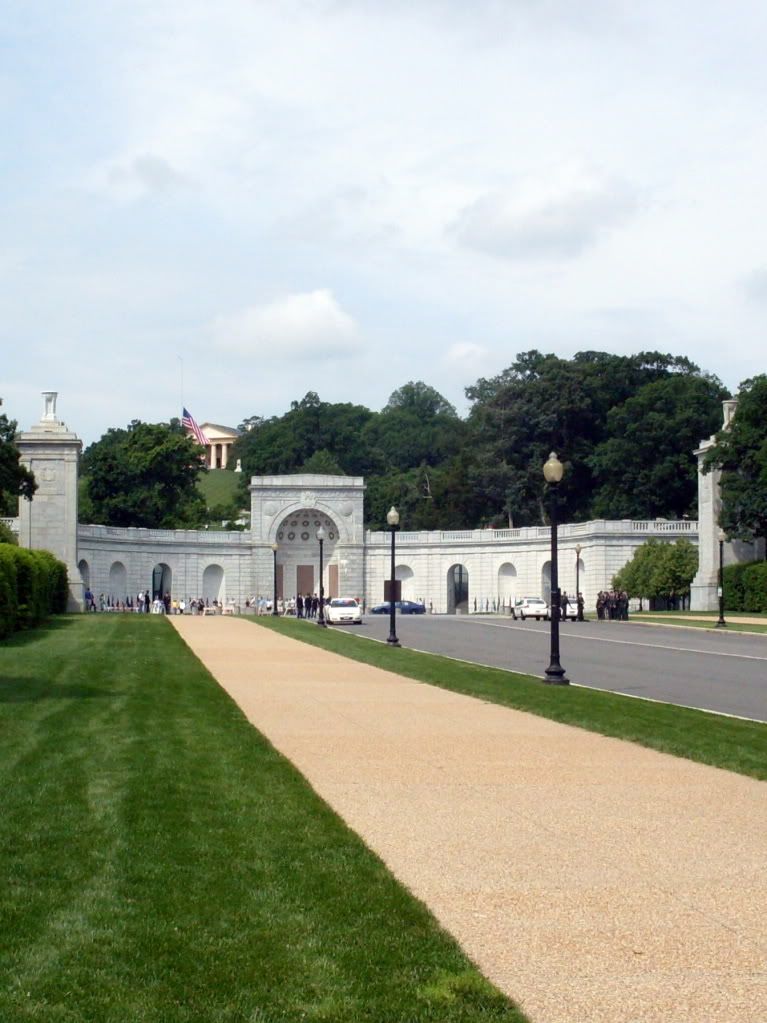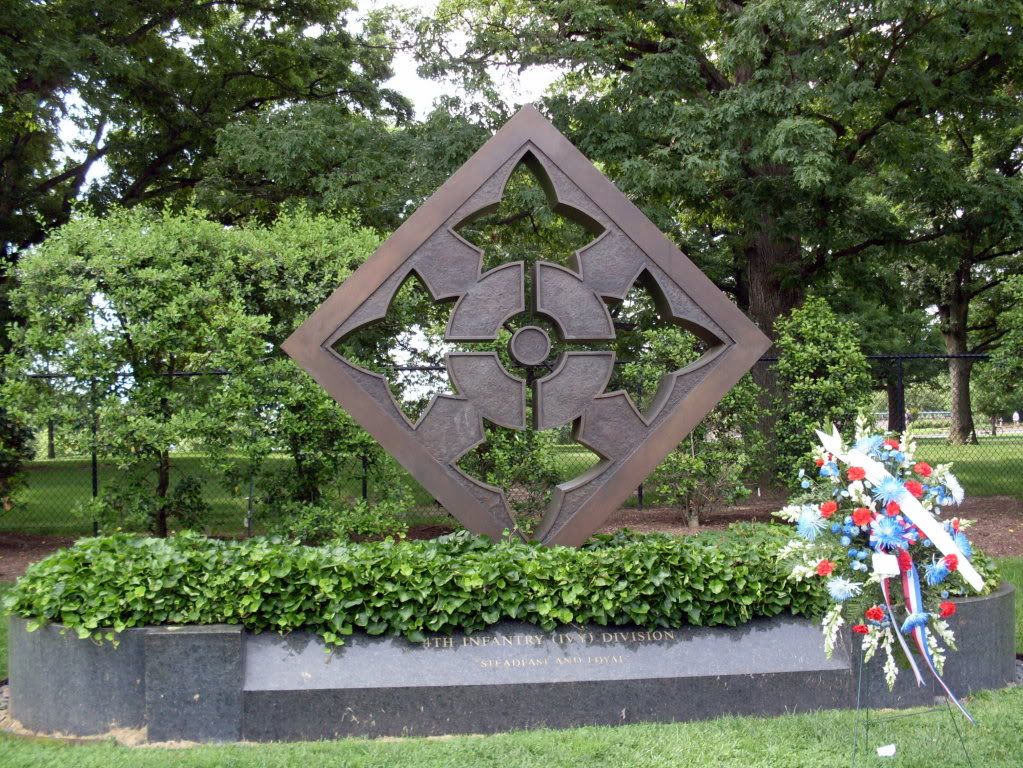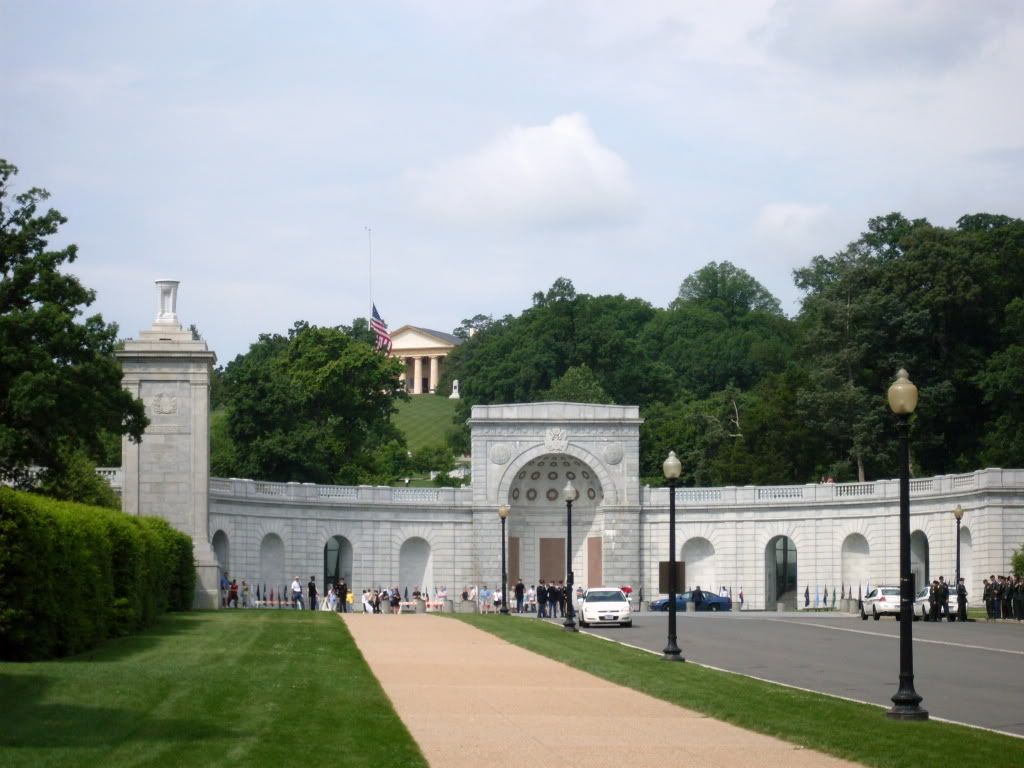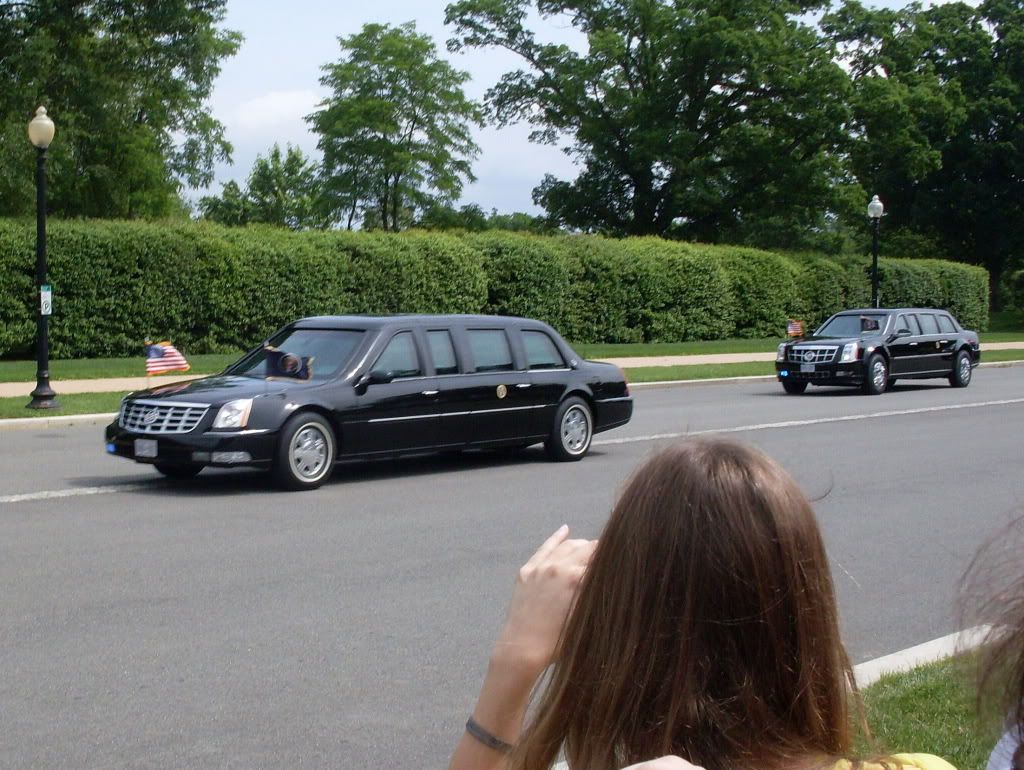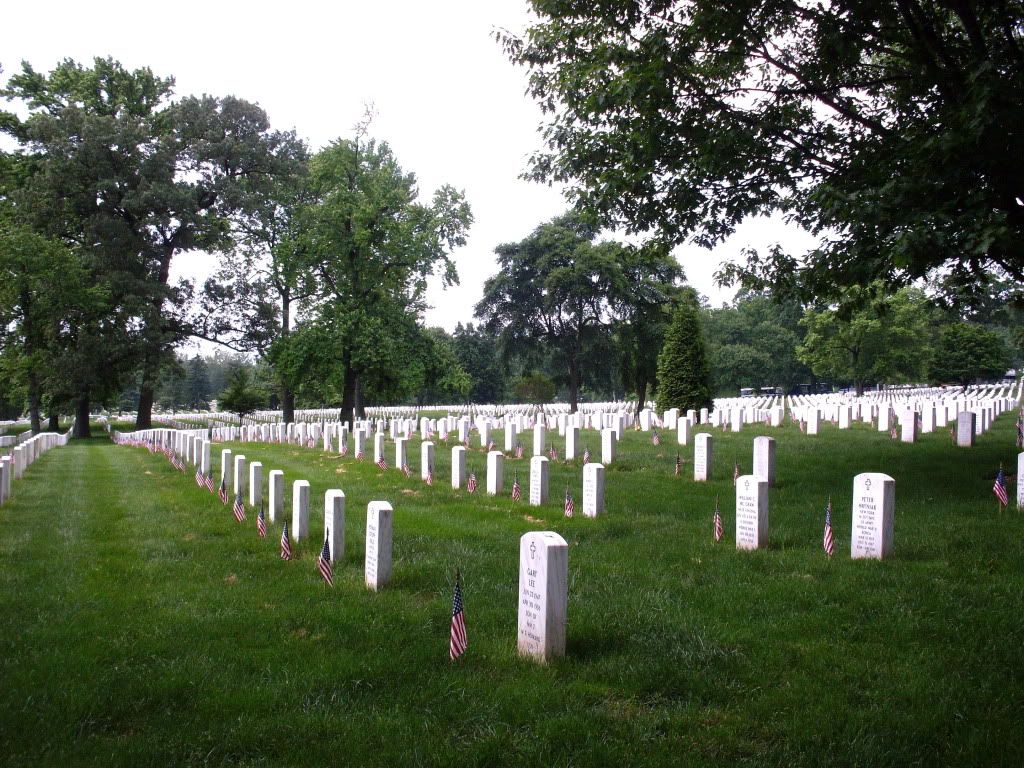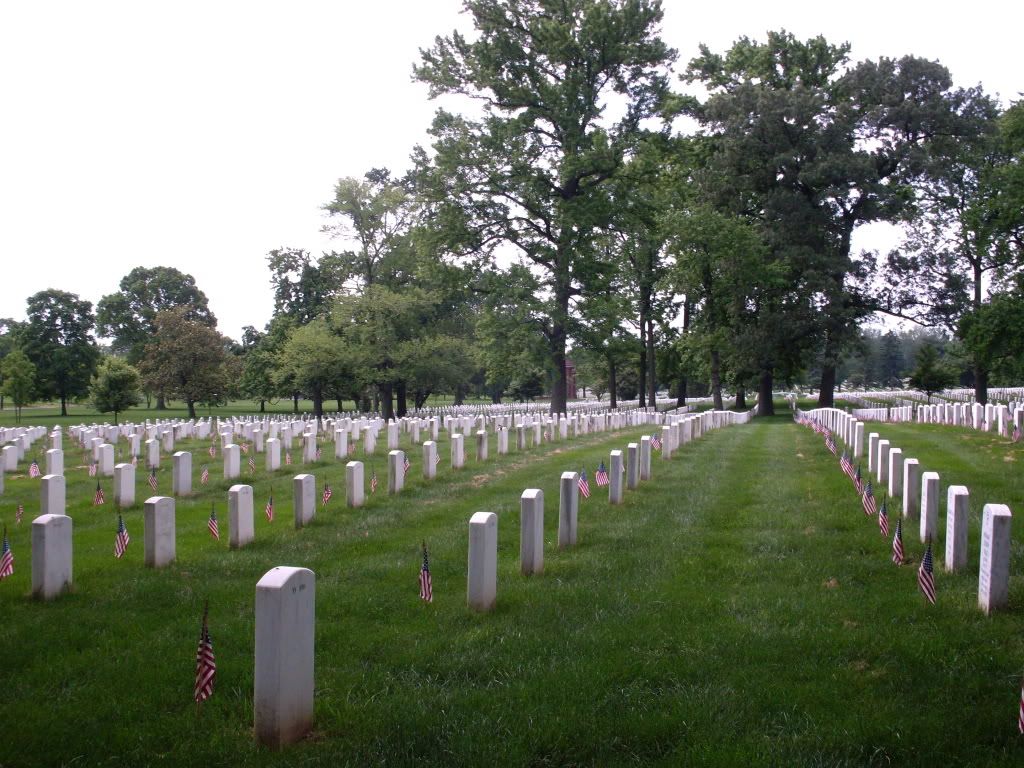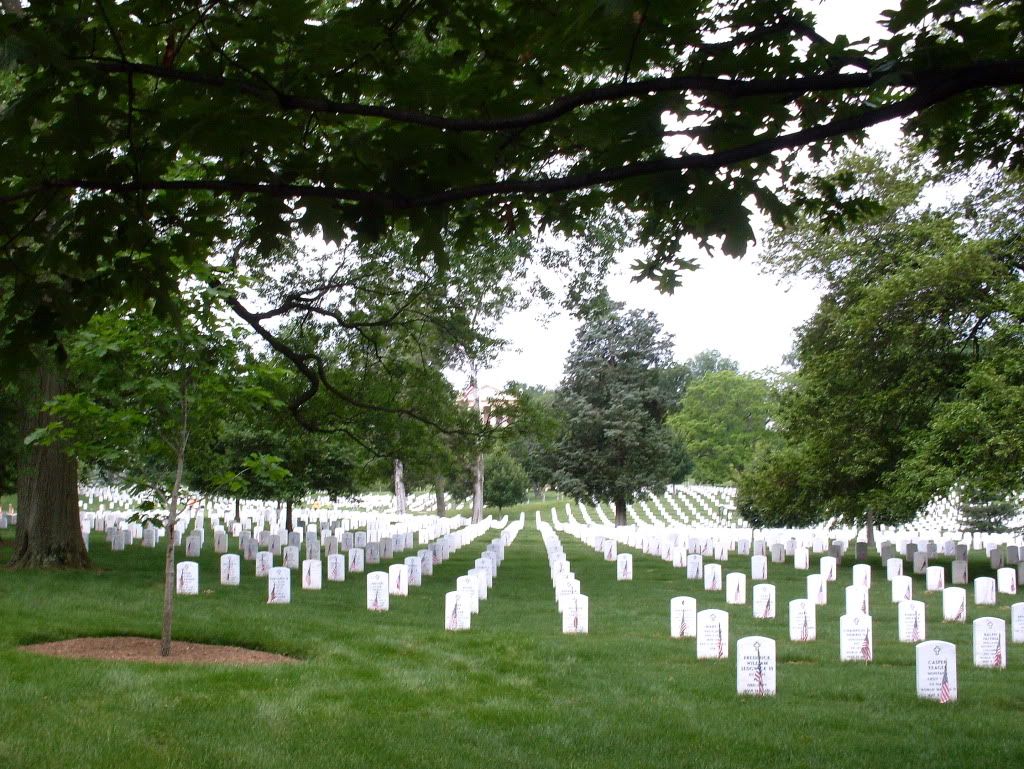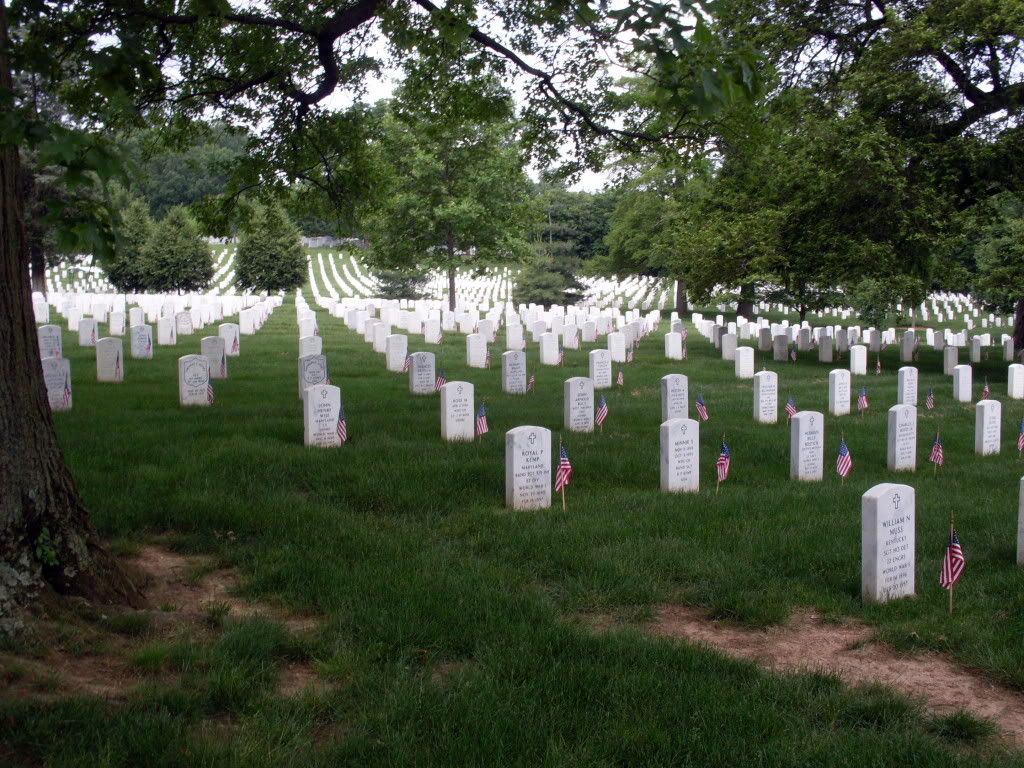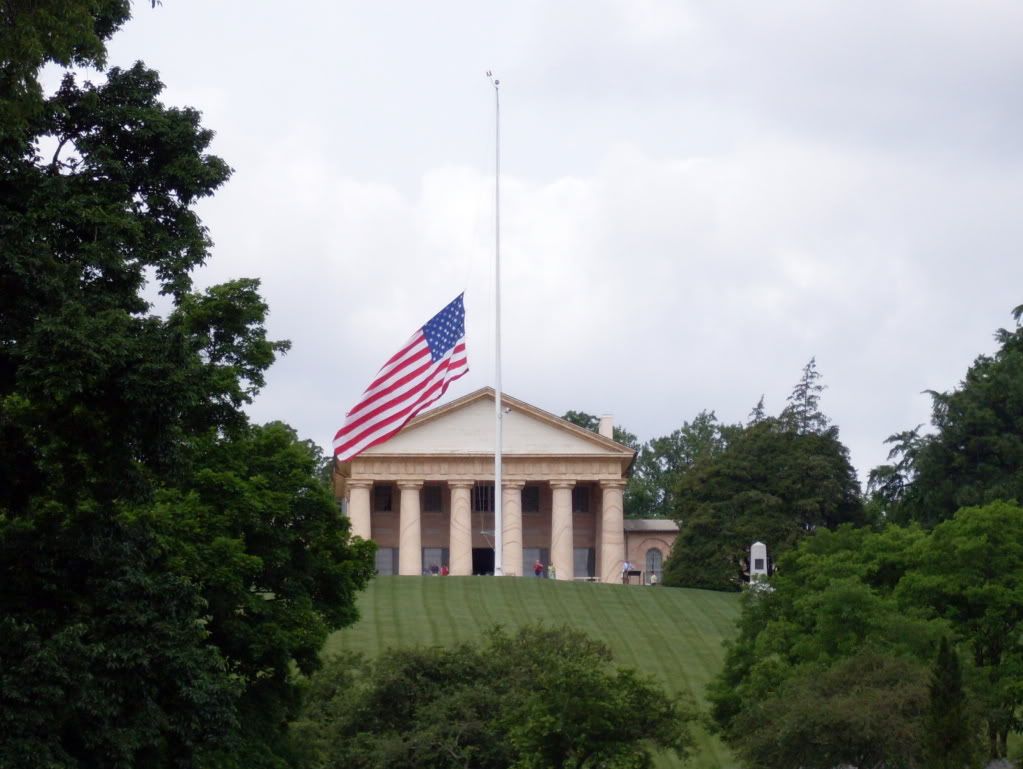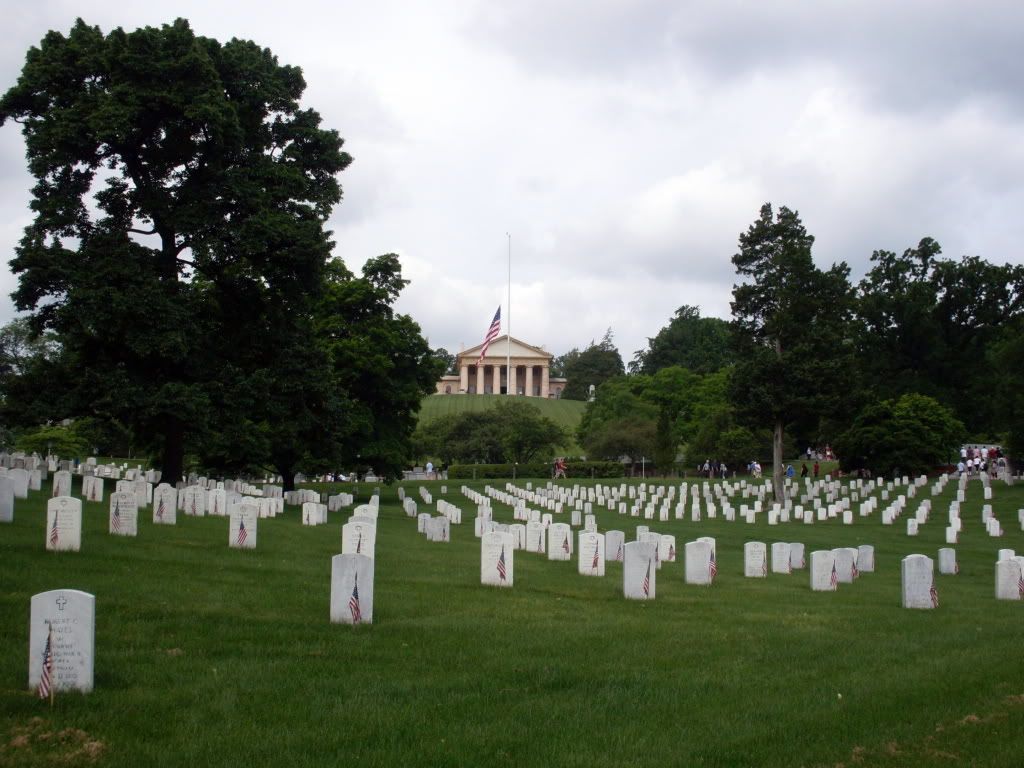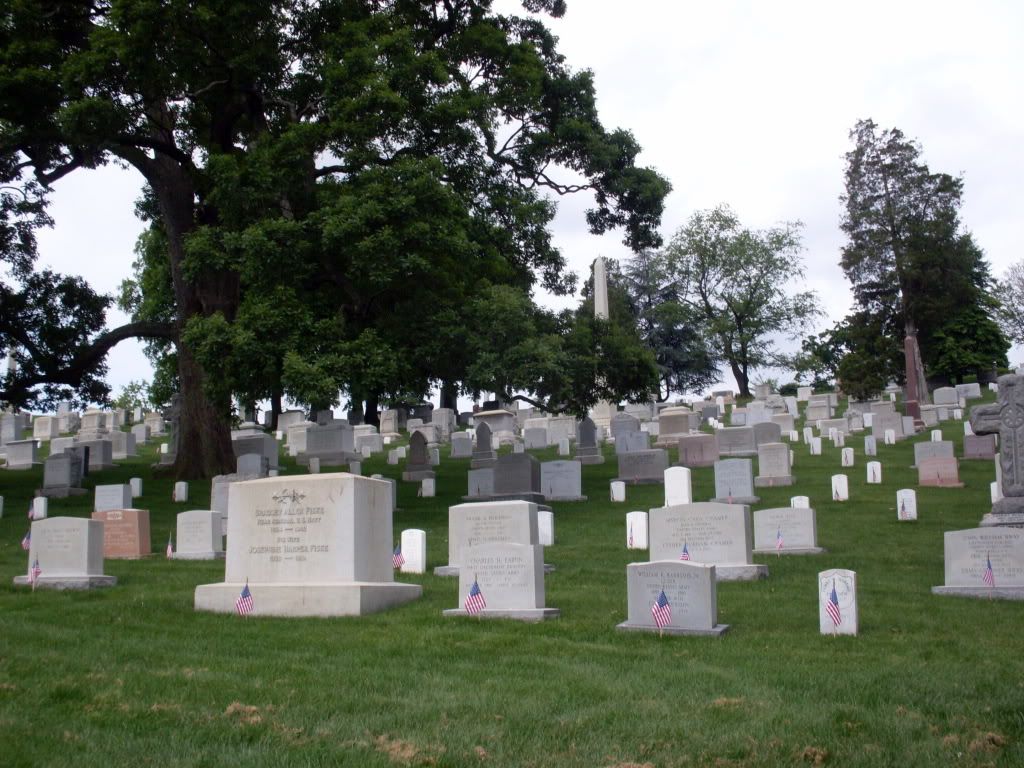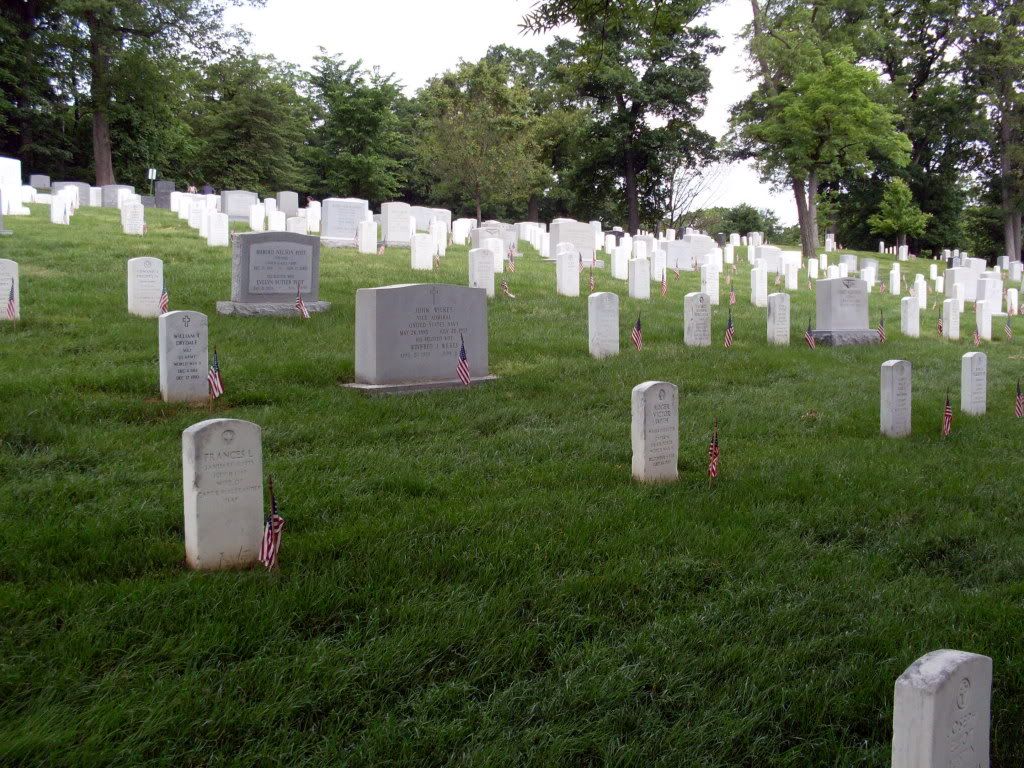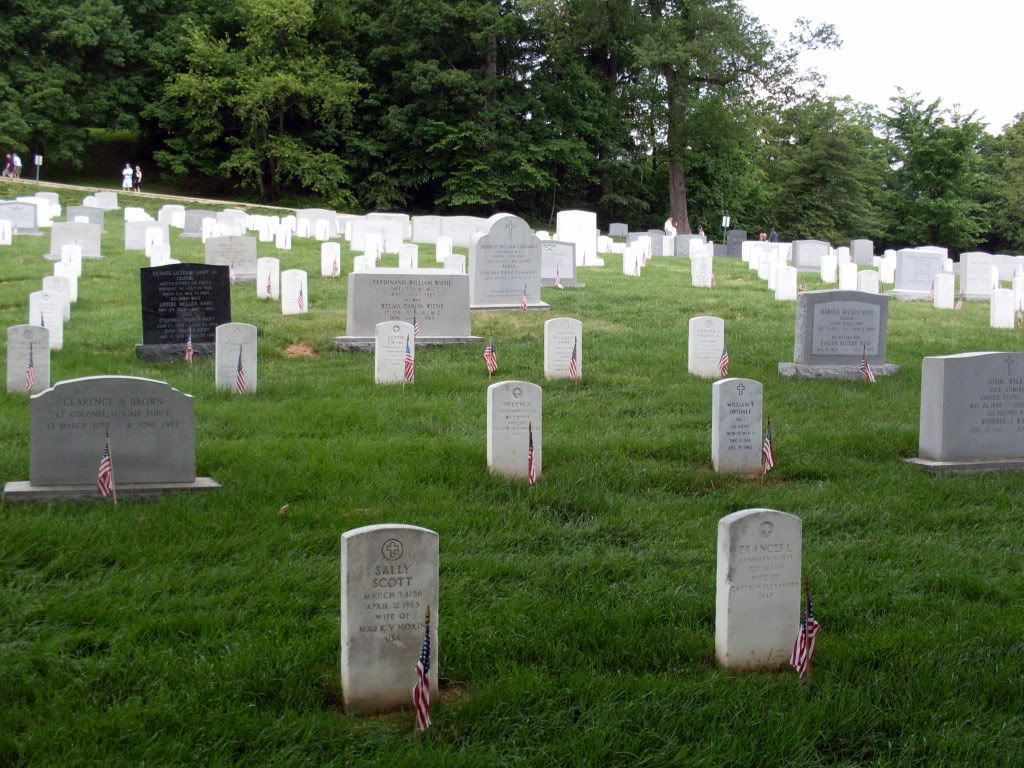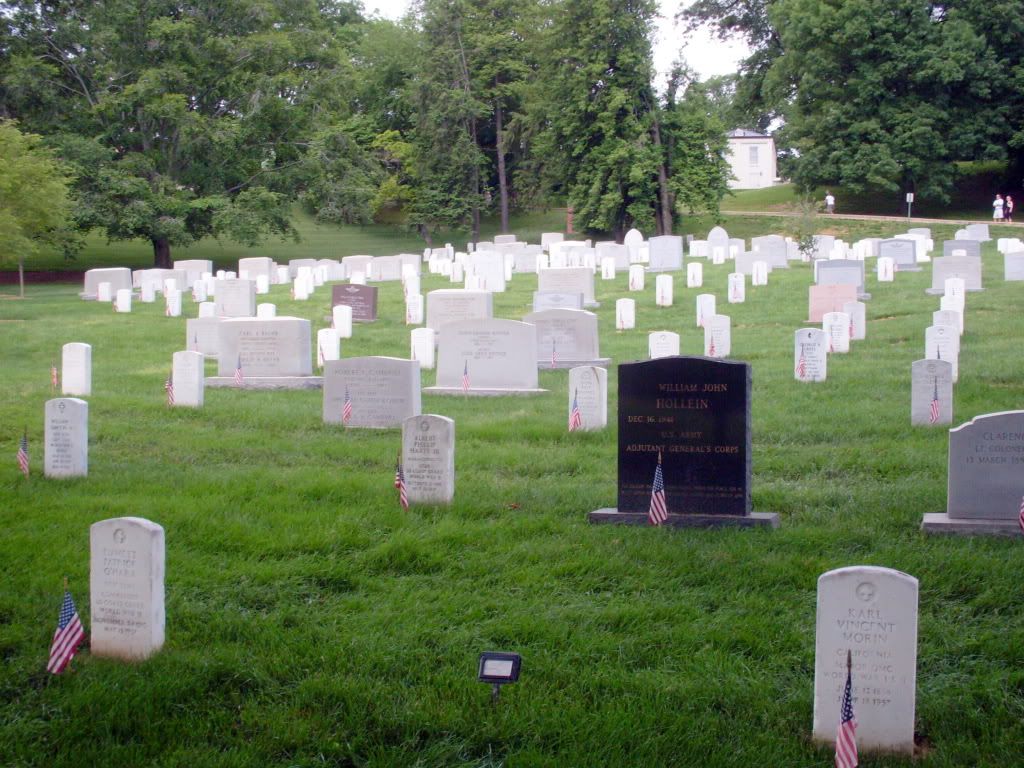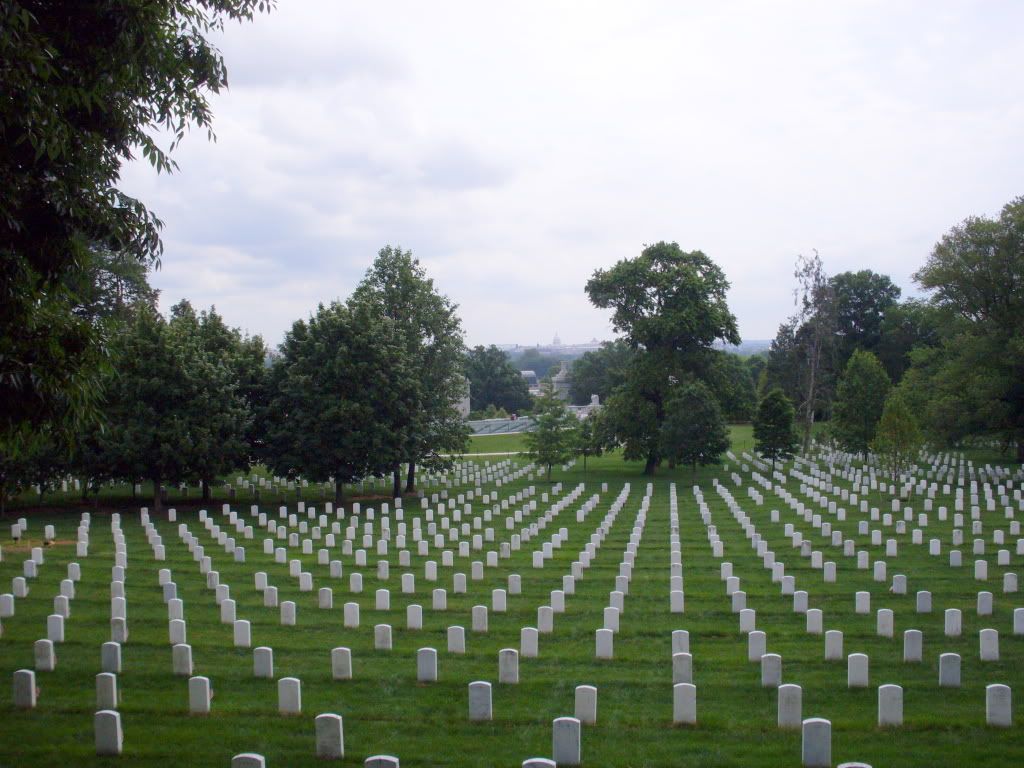Arlington National Cemetery FactsArlington Mansion and 200 acres of ground immediately surrounding it were designated officially as a military cemetery June 15, 1864, by Secretary of War Edwin M. Stanton. Scene at Arlington National Cemetery
More than 300,000 people are buried at Arlington Cemetery.
Veterans from all the nation's wars are buried in the cemetery, from the American Revolution through the Iraq and Afghanistan. Pre-Civil War dead were reinterred after 1900.
The federal government dedicated a model community for freed slaves, Freedman's Village, near the current Memorial Amphitheater, Dec. 4, 1863. More than 1,100 freed slaves were given land by the government, where they farmed and lived during and after the Civil War. They were turned out in 1890 when the estate was repurchased by the government and dedicated as a military installation.
In Section 27, are buried more than 3,800 former slaves, called "Contrabands" during the Civil War. Their headstones are designated with the word "Civilian" or "Citizen."
Arlington National Cemetery and Soldiers Home National Cemetery are administered by the Department of the Army. All other National Cemeteries are administered by the Department of Veterans Affairs, or the National Park Service.
Arlington House (Custis-Lee Mansion) and the grounds in its immediate vicinity are administered by the National Park Service.
The flags in Arlington National Cemetery are flown at half-staff from a half hour before the first funeral until a half hour after the last funeral each day. Funerals are normally conducted five days a week, excluding weekends.
Funerals, including interments and inurnments, average 28 a day.
With more than 300,000 people buried, Arlington National Cemetery has the second-largest number of people buried of any national cemetery in the United States. Arlington National Cemetery conducts approximately 6,400 burials each year. The largest of the 130 national cemeteries is the Calverton National Cemetery, on Long Island, near Riverhead, N.Y. That cemetery conducts more than 7,000 burials each year.
The Tomb of the Unknowns is one of the more-visited sites at Arlington National Cemetery The Tomb is made from Yule marble quarried in Colorado. It consists of seven pieces, with a total weight of 79 tons. The Tomb was completed and opened to the public April 9, 1932, at a cost of $48,000.
Three unknown servicemen are buried at the Tomb of the Unknowns:
A joint-service casket team holds a U.S. flag outstretched above the casket bearing the remains of the Vietnam Unknown, while President Ronald Reagan places a wreath at the casket's head during entombment ceremonies at Arlington National Cemetery.
Unknown Soldier of World War I, interred Nov. 11, 1921. President Harding presided. Unknown Soldier of World War II, interred May 30, 1958. President Eisenhower presided. Unknown Soldier of the Korean Conflict, interred May 30, 1958. President Eisenhower presided, Vice President Nixon acted as next of kin. An Unknown Soldier of the Vietnam Conflict, interred May 28, 1984. President Reagan presided. The remains of the Vietnam Unknown were disinterred May 14, 1998, and were identified as those of Air Force 1st Lt. Michael J. Blassie, whose family has reinterred him near their home in St. Louis, Mo. It has been determined that the crypt at the Tomb of the Unknowns that contained the remains of the Vietnam Unknown will remain empty.) The Tomb of the Unknowns is guarded by the U.S. Army 24 hours a day, 365 days a year. The 3rd U.S. Infantry (The Old Guard) began guarding the Tomb April 6, 1948.
On July 24, 1998, U.S. Capitol Police Officers John Michael Gibson, 42, and Jacob Joseph Chestnut, 58, were killed in the line of duty. They are buried in Arlington National Cemetery. Special Agent Gibson is buried in Section 28. Officer Chestnut, a retired Air Force master sergeant, is buried in Section 4.
In addition to in-ground burial, Arlington National Cemetery also has one of the larger columbariums for cremated remains in the country. Seven courts are currently in use, with over 38,500 niches.
When construction is complete, there will be nine courts with a total of over 60,000 niches; capacity for more than 100,000 remains. Any honorably discharged veteran is eligible for inurnment in the columbarium.
10 Facts about Arlington National Cemetery1. Arlington National Cemetery is the only military cemetery that is authorized to use horses as a regular part of its ceremony.
2. There are approximately 16,000 ceremonies conducted annually at the Tomb of the Unknown Soldier.
3. Flags are lowered to half staff thirty minutes before the first funeral and remain at half staff until thirty minutes after the last service.
4. Arlington National Cemetery averages 15 funerals per day, appproximately 3,000 annually. It is expected to reach capacity in the year 2020, when over 250,000 people will have been buried.
5. The president sends four wreaths to Arlington each year: on
* Memorial Day
* Veteran's Day
* May 29th (President Kennedy's birthday)
* September 15th (President Taft's birthday)
6. There are twenty-five accepted symbols that can be placed on government stones. Most have a simple cross indicating Christian ,but there are symbols for other faiths, such as Jewish, Muslim, Buddhist, Methodist, Mormon, American Indian, and Atheist. The atheist symbol is an atom molecule.
7. Over the Memorial Day weekend, flags are placed on each grave in the cemetery. Troops from the Old Guard (3rd Infantry) have flags on all the graves by dawn and the flags remain on the gravesites until after the Memorial Day Service.
8. Mrs. Jacqueline Kennedy and U.S. Attornery General Robert F. Kennedy placed several items in the President's casket prior to burial. These include three letters, a pair of gold cuff links, a piece of scrimshaw engraved with the presidential seal, a silver rosary, and a PT-109 tie clasp.
9. The designation "U.S.C.T" (United States Colored Troops) on a stone indicates that individual served in a black regiment. There are 3,800 former slaves buried at Arlington, most of them in Section 27. Their stones have either "Civilian" or "Citizen" engraved on them.
10. George Washington Parke Custis, the original owner of the estate, is buried with his wife in Section 13.


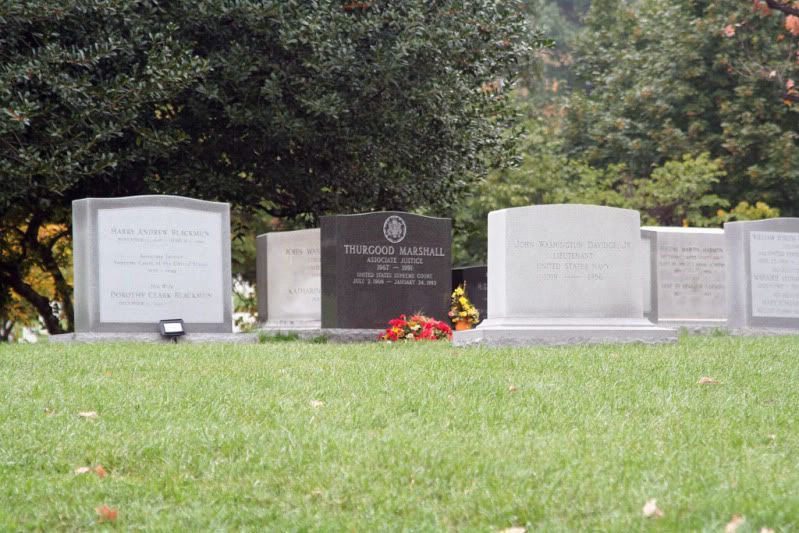
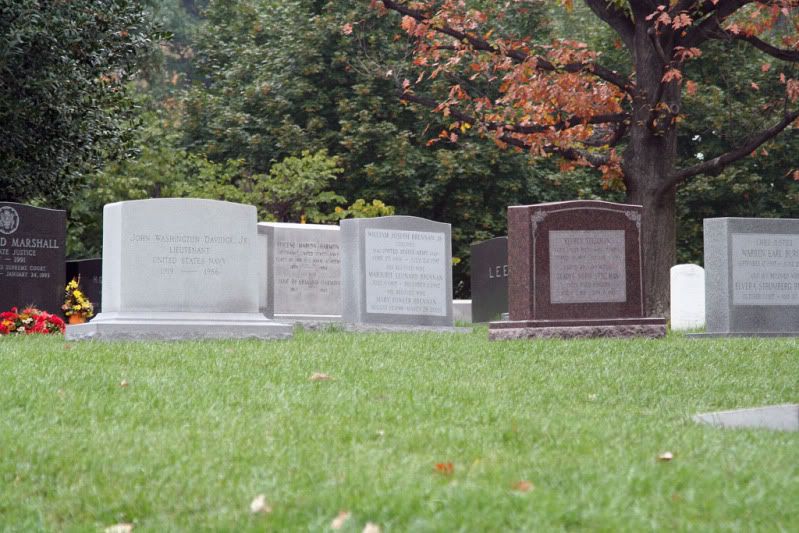
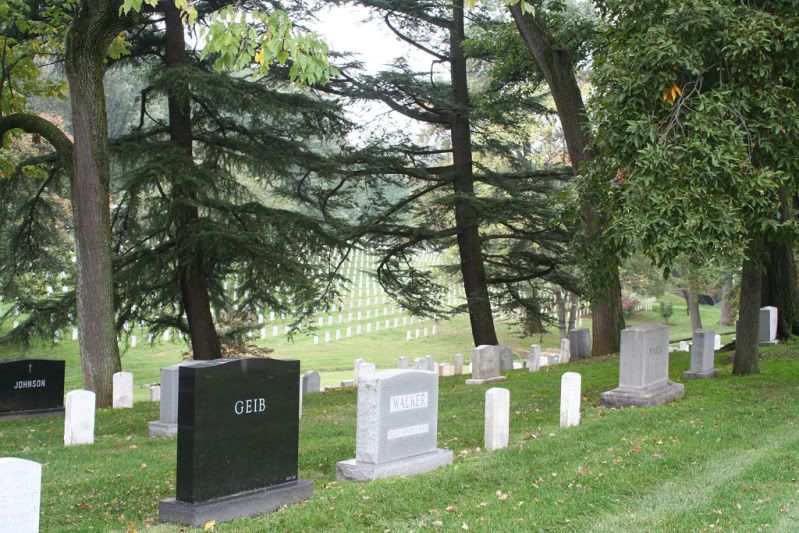
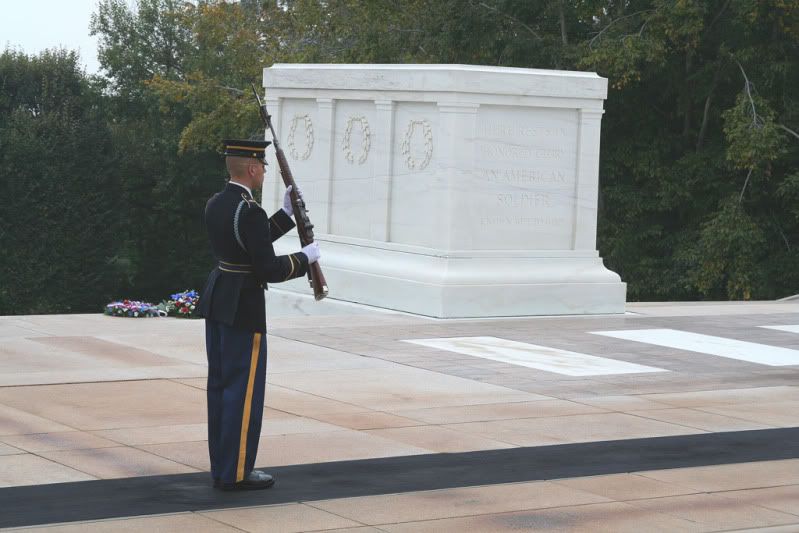
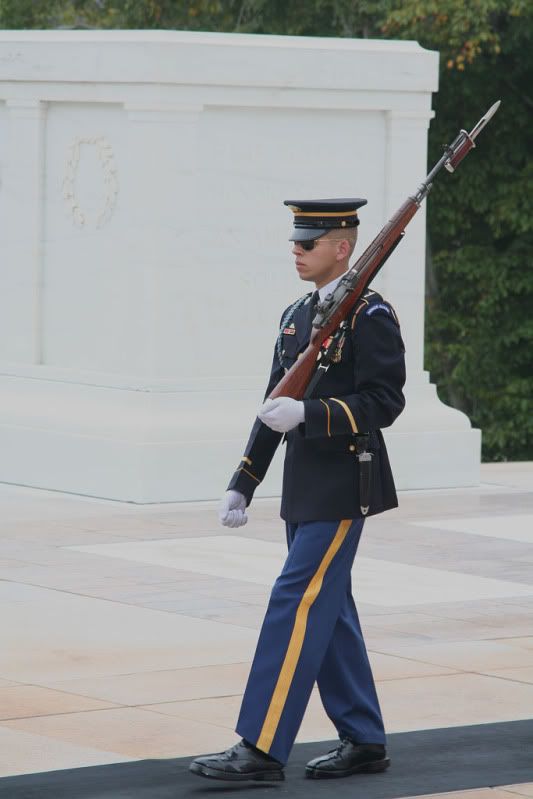
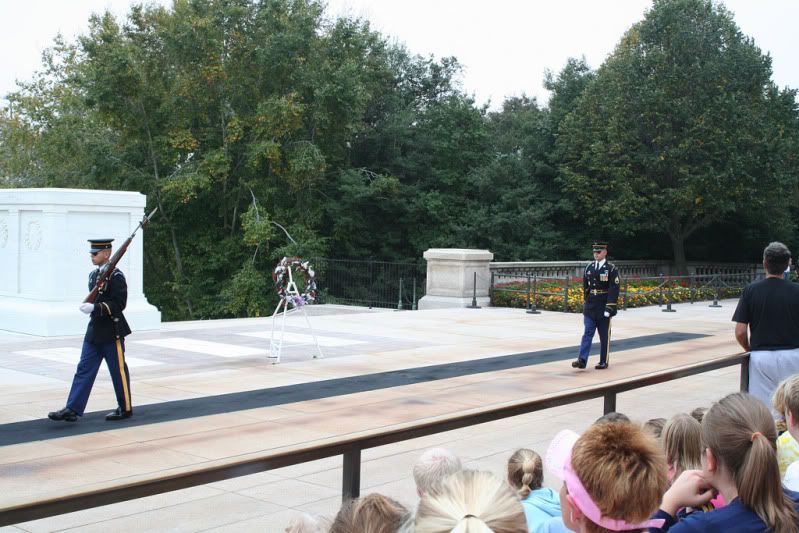


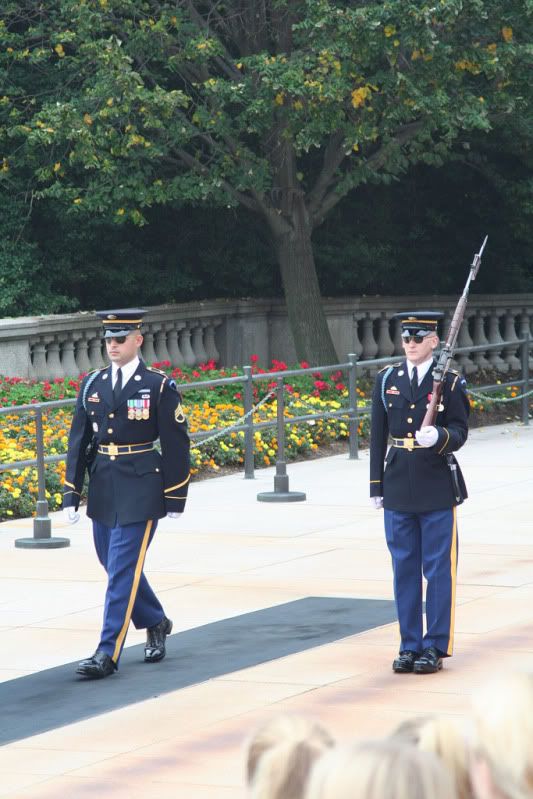
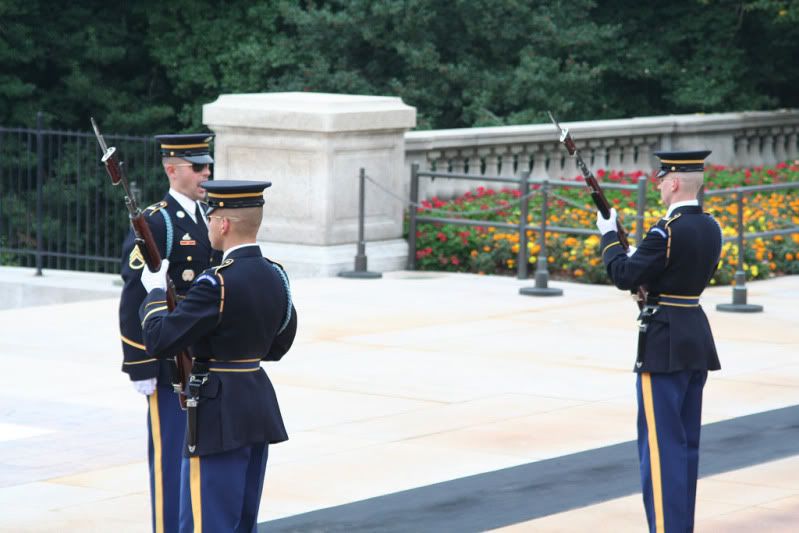
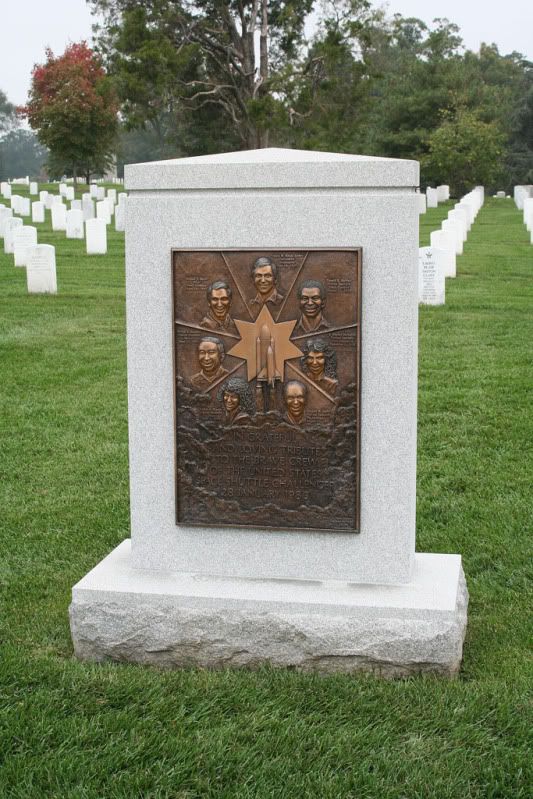
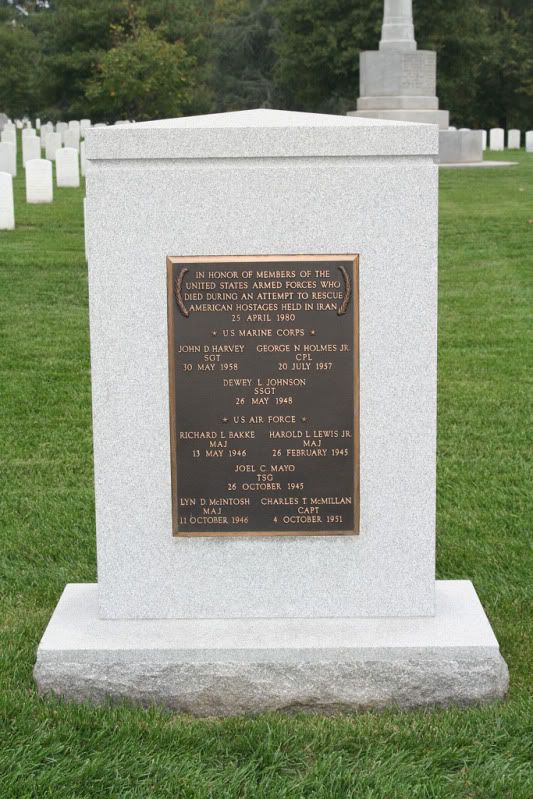
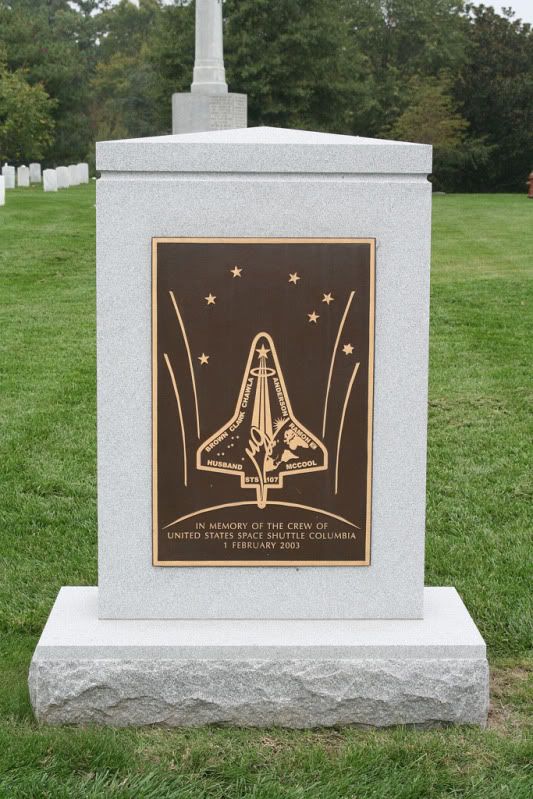
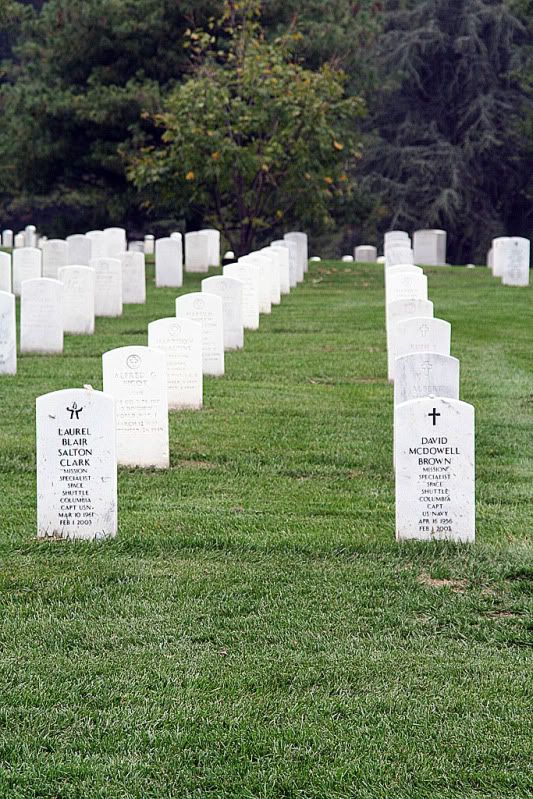
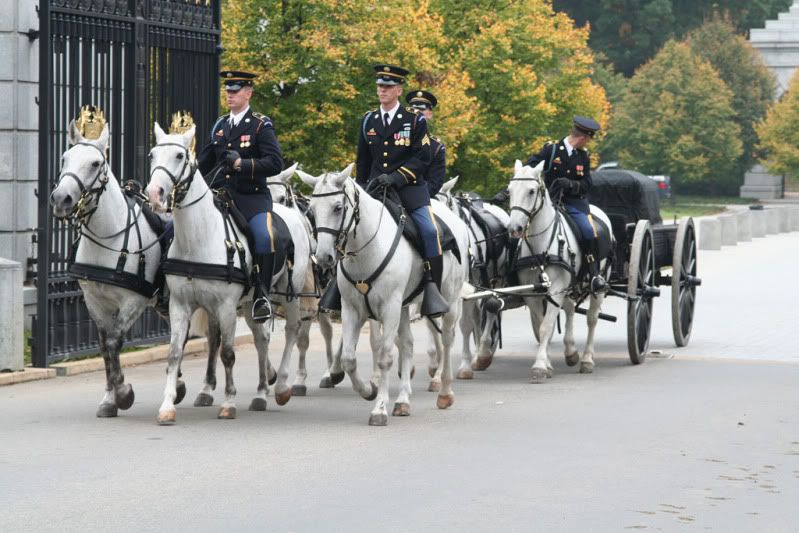
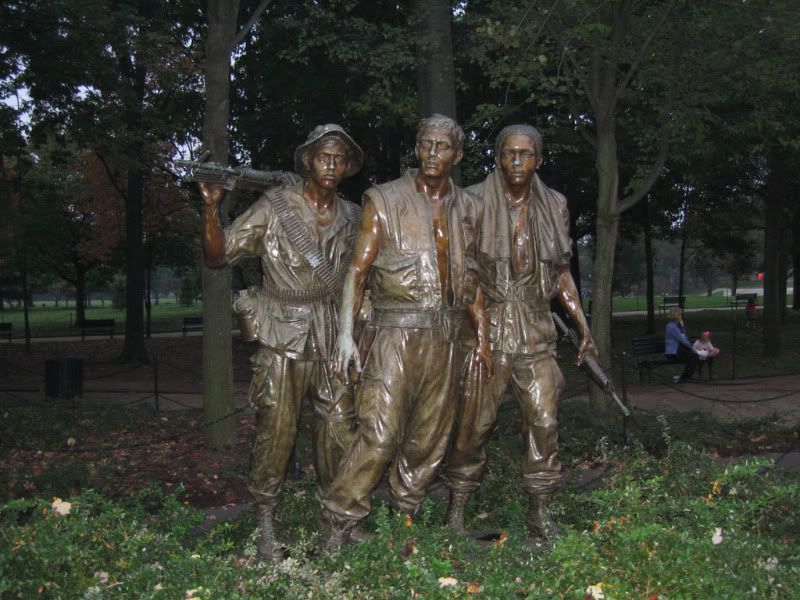
And let's get one thing straight. There's a big difference between a pilot and an aviator. One is a technician; the other is an artist in love with flight. — E. B. Jeppesen



















